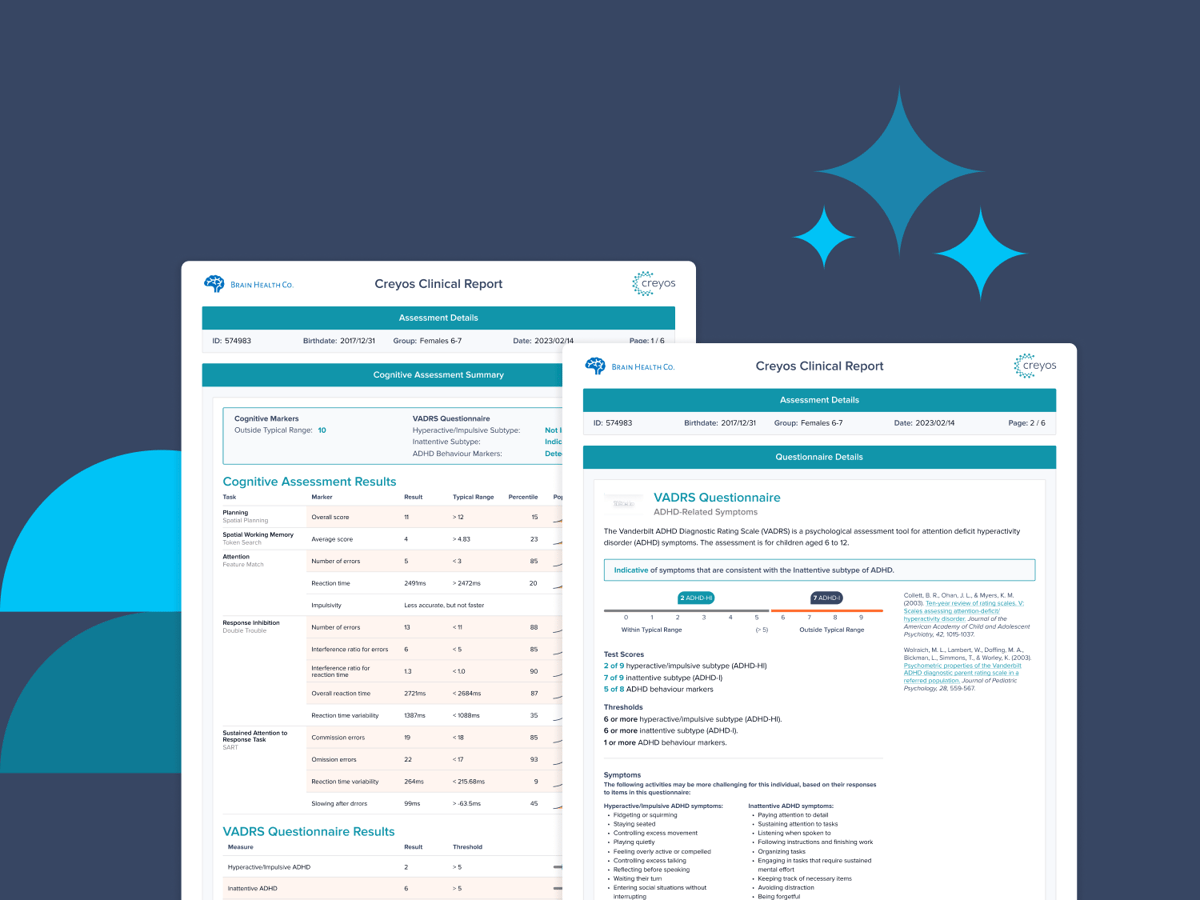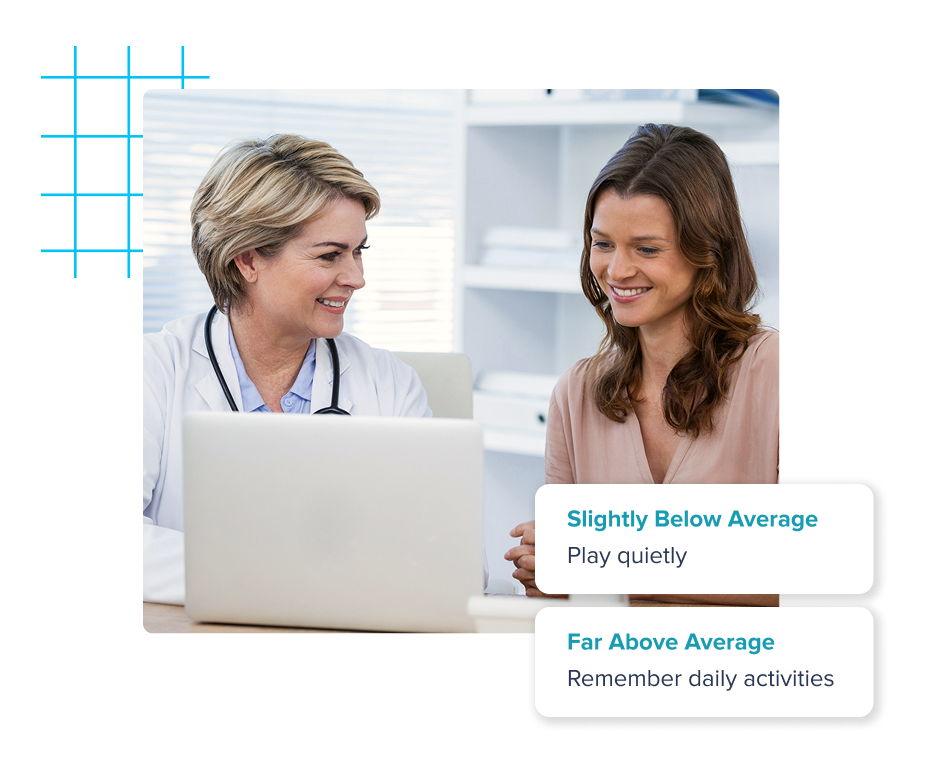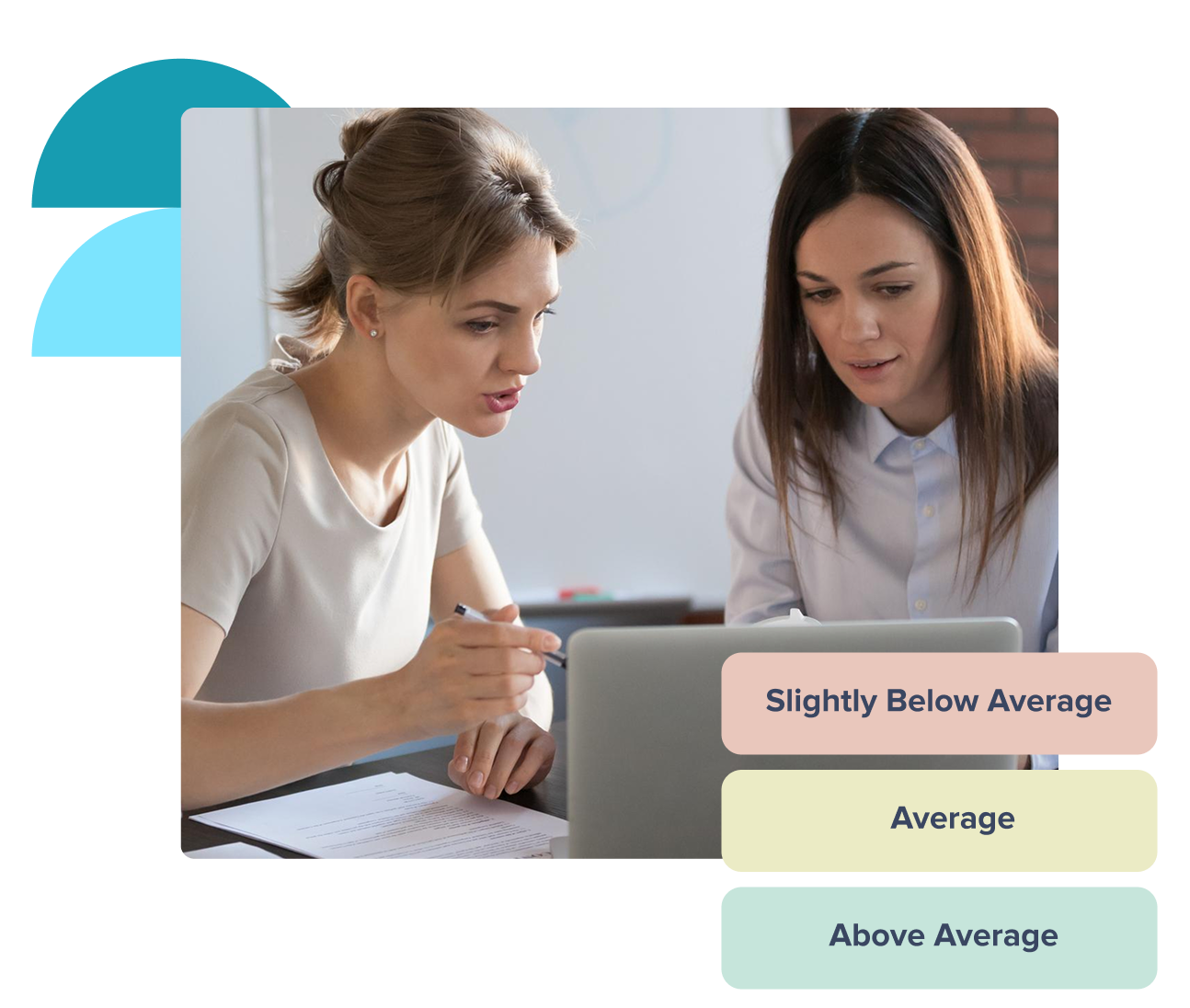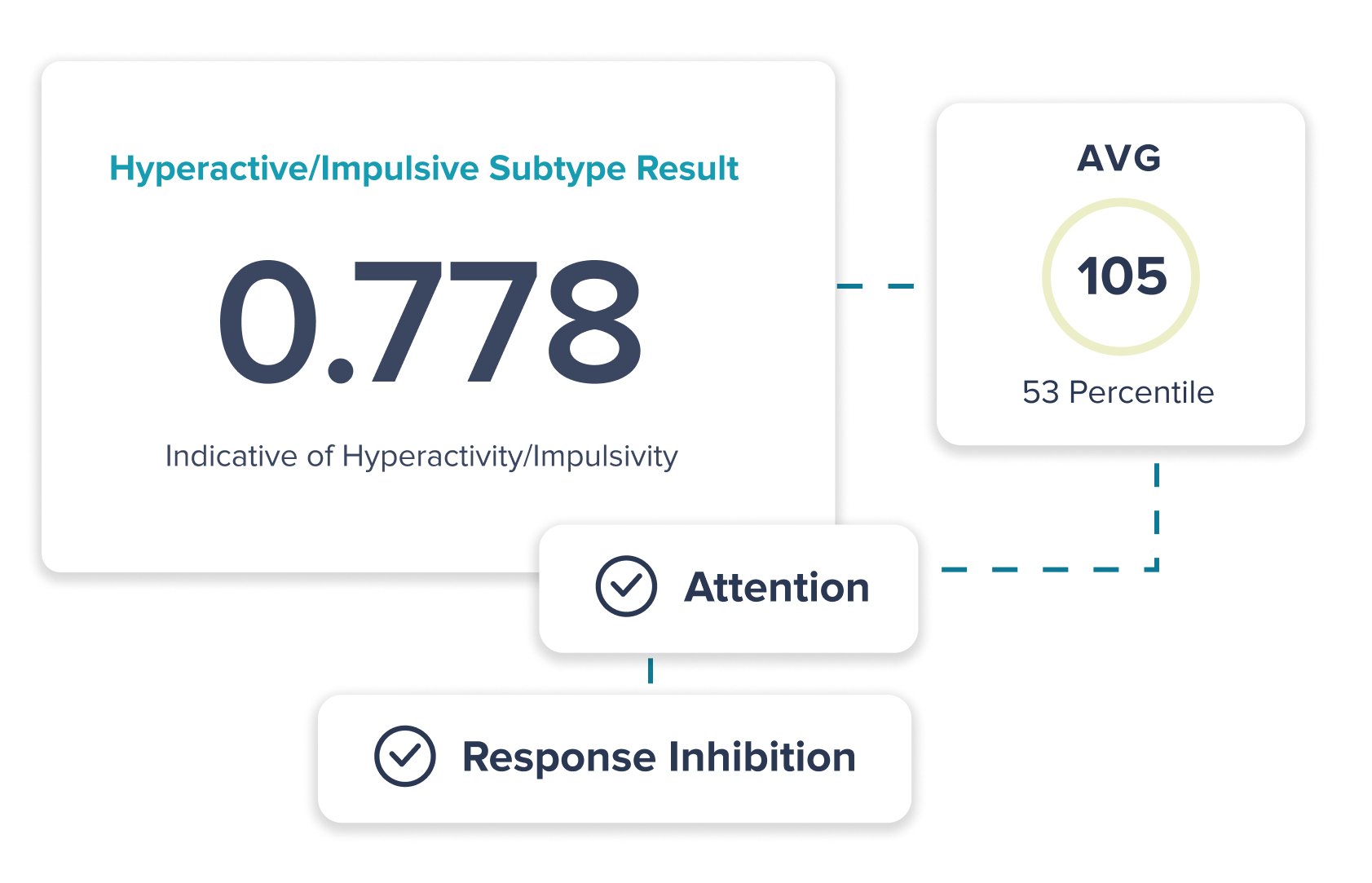
The Creyos ADHD Cognitive Assessment and Automated Report
The prevalence of attention deficit hyperactivity disorder...
Read article
Fast, accurate ADHD screening--no manual scoring required. With Creyos you can instantly assess attention deficit hyperactivity disorder (ADHD) symptoms with a digitized, auto-scored version of the Strengths and Weaknesses of ADHD Symptoms and Normal Behavior (SWAN) questionnaire. Designed for speed, precision, and seamless clinical workflows.


Traditional tools often focus only on deficits—but the normal behavior scale in the SWAN (Strengths and Weaknesses of ADHD Symptoms and Normal behavior) allows clinicians to assess ADHD traits across the full spectrum, from strengths to impairments. This dimensional approach captures both negative and positive ends of attention and behavior, helping distinguish between typical development and attention deficit hyperactivity disorder. With robust psychometric properties and alignment to DSM criteria, the SWAN supports more accurate identification and care planning—especially in community and pediatric mental health settings.
Using the SWAN to assess patients under 18 can help healthcare providers more accurately identify ADHD traits and track treatment effectiveness over time.

The SWAN Rating Scale assesses both strengths and weaknesses in behavior, offering a dimensional view of ADHD symptoms. It aligns with modern understandings of attention deficit hyperactivity disorder beyond categorical DSM criteria, supporting more precise symptom identification and clinical interpretation.

The SWAN reflects a normal distribution—capturing both typical and impaired behavior. This improves specificity and helps differentiate ADHD traits from age-appropriate variation using a validated normal behavior scale.

With strong psychometric properties and confirmed factor structure, the SWAN scale reliably measures key ADHD symptom dimensions. It supports diagnosis and monitoring by capturing inattention, impulsivity, and broader behavioral traits across clinical and community samples.

The SWAN is seamlessly integrated into the Creyos protocol for attention deficit hyperactivity disorder (ADHD), or can be used independently--making it easy to assess both strengths and weaknesses in attention and behavior. Just assign the questionnaire to a caregiver or teacher. Results are automatically scored and ready to support more nuanced clinical insights.







The SWAN differs from traditional ADHD rating scales by using a normal behavior scale that measures both strengths and weaknesses across the full spectrum of ADHD symptoms. Unlike categorical measures in the Diagnostic and Statistical Manual of Mental Disorders (DSM), the SWAN rating scale captures variance across dimensional definitions, making it more sensitive to both ends of the behavioral continuum—including the negative and positive ends.
The SWAN scale supports a more nuanced understanding of attention deficit hyperactivity disorder by aligning with the general ADHD factor and measuring behaviors on a normal distribution. This enables the detection of both clinical and subclinical traits in ADHD patients, improves psychometric properties, and enhances early identification—especially in community samples and diverse groups. It also helps address statistical biases present in more deficit-oriented tools.
The questionnaire includes 18 items corresponding to the DSM criteria for ADHD symptoms, divided into inattention and hyperactivity-impulsivity domains. Each item is rated using a normal behavior rating scale to assess where a child falls in relation to typical developmental expectations. The SWAN scores reflect both functional strengths and difficulties, making it a strong option for behavioral measures in neurodevelopmental disorders. Questions 1-9 focus on symptoms related to inattention, while questions 10-18 focus on symptoms related to hyperactivity and impulsivity. The patient’s behavior is scored on a 7-point scale ranging from far above average to far below average, with 4 (average) representing normal behavior for the child’s age. Higher scores indicate a greater possibility of ADHD diagnosis and should be paired with additional questionnaires and cognitive tasks.
Yes. The SWAN has been used in both clinical and research settings, including with preschool samples, teacher ratings, and in studies examining cultural differences and genetic and environmental influences. Its factor structure has been supported through confirmatory factor analysis across populations, including studies published in Journal of Child Psychology and Psychiatry and Clinical Child and Adolescent Psychology. Versions with English and Spanish strengths make it suitable for multilingual contexts.
Using dimensional tools like the SWAN rating scale helps providers identify ADHD traits along a continuum rather than relying solely on categorical thresholds. This approach supports better monitoring of treatment effectiveness, helps reduce under- and over-diagnosis, and enables more personalized care strategies. It is especially useful in cases with psychiatric comorbidity, impulsive behavior, or functional impairment where categorical tools may fall short.
The SWAN is widely cited for its utility in exploring factor analysis, genetic factors, and cognitive performance in ADHD. Its ability to reflect both ADHD symptoms and normal behavior allows for more accurate modeling in future research, including studies on response inhibition, ODD symptoms, and cross-cultural validity.
Yes. As a psychological assessment tool, the SWAN has proven practical for routine practice in clinical, school, and research settings. Its ability to reflect continuum measures and alignment with the American Psychiatric Association’s understanding of dimensional traits make it a strong option for screening tools in mental health and child psychology contexts.
While higher scores are correlated with a diagnosis of ADHD, the SWAN assessment is not a diagnostic tool on its own. It is a multipurpose tool for screening, identifying, monitoring, and measuring the presence and severity of ADHD symptoms over time.

The prevalence of attention deficit hyperactivity disorder...
Read article

Today, our medical understanding of attention deficit...
Read article

Almost 1 in 10 children will be diagnosed with...
Read article